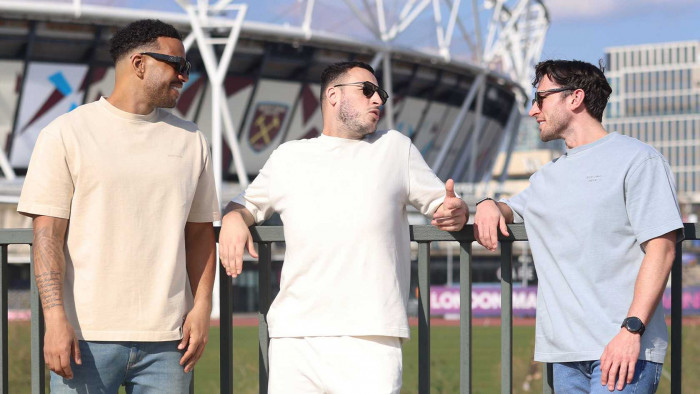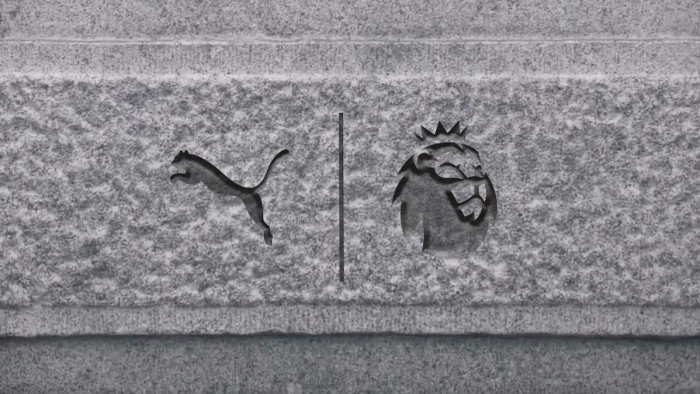Was it really better in the old days?
An unbiased look at the past by men who actually lived through it


Matchday Atmosphere in the ’70s
“Is this a library?” At most Premier League grounds that question, mockingly chanted by visiting fans, has never felt more valid. Increasingly, the noise during top-flight English football – once world-renowned for its decibelic atmosphere – is so sedate as to appease even the strictest of librarians.
Not so in the Seventies – before the days of multibillion-pound TV deals – when fans of every team, in every ground, were on their feet and in full voice for the entirety of every game. I’ve always assumed that the matchday experience must’ve been infinitely livelier and more enjoyable back then. Well, there are few people better qualified to confirm this than John Motson, the legendary broadcaster whose commentary career spanned five decades.

How does the atmosphere today compare to the Seventies, when you first started on Match Of The Day?
The singing and chanting was more prominent. I can remember walking around the pitch to my commentary position, and at half past two there was a raucous exchange going on between the supporters of the home and away teams, echoing across the terraces. The atmosphere had already started. Now, when you walk round the pitch [at that time], it’s still half empty. It’s more like the theatre now – everyone has their assigned seats. Which is good, in many ways, because the all-seater stadiums have made them much more comfortable, and they’ve brought families back to football. I remember as a very young boy being frightened at Millwall because there was so much hostility in the crowd. I’m not talking about hooliganism exactly; I’m talking about “us and them” and the language. It was very primitive.
So you don’t resent losing the standing-only terraces?
I wouldn’t want to go back and inherit the disadvantages of the stadiums that were hopelessly out of date. The Eighties was a dreadful decade. We had incidents such as the Bradford City stadium fire and the Heysel Stadium disaster and, of course, Hillsborough. The glitz of the Premier League is completely different and more appealing in many ways than the old grounds of decaying terracing and potential tragedy.
Do you think the most passionate fans are being priced out of football?
The prices now, for some, are prohibitive. The corporate, commercial side of football, the sponsorship, is the biggest change I’ve noticed.
Ah yes, the prawn-sandwich brigade…
That type of person is not necessarily one to shout his head off when the game starts. So you’ve got a social-class divide now. Whereas going back to the early Seventies, I remember grounds where there was no restaurant or sponsors’ boxes. The game wasn’t commercial. Therefore, supporters had to make their own entertainment.
So, given the choice between attending Nottingham Forest vs Liverpool in the Seventies, or Man City vs Liverpool today, which would it be?
Well listen, the overall experience is much greater and more enjoyable now than it was then. But I would like the matches to kick off at three o’clock on a Saturday: I quite often yearn for the old days when you could rest assured that every game kicked off at the same time.
Verdict: better now
Rock excess in the ’70s
Being a rock star today must be rubbish. You have to be ‘relatable’ on social media, making sure not to slag anyone or anything off or else risk being cancelled. And to stand any chance of success you have to get Ed Sheeran to write a song for you. Worst of all, you have to drive around LA and pretend to be mates with James Corden. Rock stars were more interesting in the Seventies, when the giants of rock – Led Zeppelin, Black Sabbath, Deep Purple and the rest – roamed the earth, doing whatever the hell they liked.
Someone who would know all about that era is the legendary Shep Gordon, long-time manager of Alice Cooper and subject of the Mike Myers-directed Supermensch, a documentary that covered his long and incredible career.

What was the attitude to excess like back then?
I remember the first thing I heard about the Rolling Stones was that they urinated on gas stations. I thought that was the coolest thing I had ever heard. There were guys like Keith Moon; throwing the TV out of the window was just part of checking into a hotel. It was a very different time. You were supposed to be outrageous if you were a rock star, so there weren’t any real consequences.
In your documentary, you talk about never opening your suitcase so that you could indulge in maximum hedonism – how did you manage to keep going day after day?
I used to order a bloody mary the night before and have it next to my bed for the morning. The first thing I would do was turn over and gulp it down and get going again. Drugs were a big part of it. Cocaine was everywhere. From a distance it was all fun, but I think all of us had many nights where the sun would be rising and we’d look in the mirror and think, “Who is this schmuck in the mirror? What the hell are you doing to yourself?”
It was a generation of free love and sex. We didn’t really understand the concept of overdosing because it wasn’tin the generation above us, so you didn’t pay penalties.It was sex, drugs and rock and roll: a very carefree and positive attitude. We all felt we were safe.
What were the downsides in the old days, compared to now?
It wasn’t really a monetised industry. You would hitchhike and live in [small] apartments. When Alice headlined Madison Square Garden, the top ticket, I think, was $2 [£1.50]. Artists couldn’t afford enough people to lie to them on a daily basis in those days. Now [musicians] can all afford a posse that tells them whatever they want.
One crazy story from the old days isn’t enough – any others you’d care to share?
Keith Moon had been staying at Alice’s house once. Alice and I got in the car and started driving. He had been hiding on the roof of the car, and he leaned over the front of the car – we’re driving at 30mph and all of a sudden there’s Keith Moon waving at us from the roof! But that was normal life. It was a crazy time, it was a great time.
Verdict: better then
Pubs in the ’70s
What were pubs like in the Seventies? I’m picturing blokes with massive sideburns, gold chains and disproportionately attractive partners, eating pickled eggs with their pints of mild, barely able to see through the smoke of a hundred Embassy filtered. There’s a lot of brown: furniture, clothing and food. No hipsters. No American beer. Simpler times.
Whatever pubs were like, they must have been great, right? I mean, there were loads of them, while today they’re closing at a distressing rate of 18 a week. One man who knows exactly what they were like, and has a reasonable grip on today’s pubs, is Tim Martin, founder of JD Wetherspoon.

“The best thing about pubs back then was that 90 per cent of beer was consumed in them. They were a melting pot. Supermarkets have taken half of pubs’ trade, so there’s been a loss of community. In terms of the standard, though, there’s no comparison. Pubs now have more food, more coffee, better disabled facilities and better wine.
“In the late Seventies in north London it was difficult to get a good pint of ale. Pubs were almost all owned by big brewers and didn’t have high standards through a lack of competition. The competition from restaurants has pushed standards up. Now they’re definitely more family friendly, which most people think is progress, but some think is a backward move!
“Pubs were heading the wrong way when it came to smoking. It had been banned in every other building, so there were more smokers in pubs. But those who weren’t smokers began shunning them. Something had to be done and I think [the ban has] improved pubs beyond recognition. I don’t even think smokers would go back.
“I feel massive nostalgia for 1978 – I was 23 years old and now I’m 63. But I do not want to go into a smoky pub that doesn’t do food and has less variety. It’s a shame that pubs have lost their beer-drinking to supermarkets, but overall, I prefer today.”
Verdict: better now
Buying a house in the ’80s
The housing market! It’s an absolute mess, isn’t it? It’s a sh*t-faced boor in Tiger Tiger with vomit on his jumper, teetering around: nobody quite knows how it got this bad, but nobody wants to fix it, either. Maybe if we ignore it, it will go away? Before we all up sticks to Skipton, I asked David Stewart, who got on the housing ladder in the Eighties, how much simpler life was back then.

“My wife and I bought our first house the year we got married: a three-bed in a small town in Cumbria. We were 22 and 23 respectively. It cost us £30,000, and we needed a deposit of about £3,000.
“We both lived at home before we moved in together – that generation lived with their parents until they bought a place – so from the age of 18 I’d been paying rent and saving. By the time we got married we’d saved quite a bit.
“We didn’t have the internet to help us then – we had to go to the estate agents and look in the window, and if we liked the look of a place, we’d have to request that they post the photographs and details to us. It wasn’t near where we lived so we could only go on weekends, and it meant it was really easy to miss a house if you didn’t know to look there.
“Interest rates shot up not long after – we were paying 14 per cent – and a lot of people in more expensive parts of the country had to sell up as the repayments became too much. In a lot of respects, we were very lucky to buy when we did, but it wasn’t necessarily easy: you had to take what was there. But I see how future generations have had to grapple with home ownership and I don’t envy them one bit.”
Verdict: better then
Heavyweight boxing in the ’90s
My memories of Nineties heavyweight boxing are fuzzy VHS clips: Lennox Lewis beating everyone, Fan Man flying into the ring, Mike Tyson spitting out Evander Holyfield’s ear lobe. In the final throes of the analogue age, before sponsored posts and Twitter spats, a fighter’s reputation was built – and violently dismantled – in the ring.
And, among my schoolmates, Mike Tyson was legendary. The modern heavyweight, the likes of Anthony Joshua and Tyson Fury, may be bigger, but none has that part-animal, part-human-wrecking-ball mystique.
Reporting ringside in Tyson’s heyday was boxing pundit Steve Bunce. He explains why the legacy of the Nineties heavyweights endures.

What made the Nineties a special time for heavyweight boxing?
Great fighters who forge great rivalries is what makes golden eras. In the Nineties, we had four champions willing to go toe-to-toe against one another: Tyson, Lewis, Holyfield and Riddick Bowe. They created dramatic storylines, sought revenge for defeats and, in pursuing greatness, produced many, many memorable nights.
How much of it was also because of their personalities?
It’s one of the reasons why we still talk about Lewis vs Tyson. Tyson had that aura – the chaos, the lunatic – that made every fight a big occasion. We’ll never see another like him. Lewis, meanwhile, was dignified outside the ropes, and one of the world’s most unpleasant men between them. It was a clash of two champions and personalities.
Does the current crop of heavyweights lack those personalities?
It’s interesting: Joshua may be an enormous household name, but, in the era of social media, why isn’t Deontay Wilder a bigger star than Holyfield, when his interviews rack up a million YouTube views? Maybe we see too much of him. Perhaps if Tyson was fighting now we’d grow bored of the relentless daily updates. Maybe the Nineties was a great era for boxing because it was still the pre-digital age; it wasn’t overload. You were left wanting more.
Can they ever match the Nineties guys?
We have three exceptionally good fighters in Joshua, Fury and Wilder. They’re all towering colossuses, all unbeaten. Fury and Wilder fight in December, the winner should face Joshua next year. That’s the only way we’ll be able to talk about this heavyweight era in the same breath as the Nineties – they still need to box each other.
Which era have you preferred covering?
I swore that I wouldn’t be one of those people who said, “It was better in my day.” But, truthfully, I looked forward more to Lewis vs Tyson than I do to Wilder vs Fury. The caveat: Lewis vs Tyson happened past its sell-by date. Fury and Wilder are both at their peak. And I can’t think of a bigger fight in British boxing than an unbeaten Joshua fighting an unbeaten Fury.
Verdict: better then
Bunce’s Big Fat Short History Of British Boxing is out now in paperback (Bantam)
Music festivals in the ’60s
Hendrix setting fire to his guitar at Monterey Pop, 1967. Bob Dylan going electric at Newport in 1965. The Who’s Pete Townshend going apesh*t on his guitar during ‘My Generation’ at Woodstock 1969. It’s iconic moments like these, coupled with the peace and love, wild drugs and tie dye, that lead me to believe that modern festivals don’t get close to the magic of the Sixties. So I tracked down Roger Daltrey, singer of The Who, to see if the image in my head is shatterproof.

“I can’t lie, playing Woodstock was so exciting. Listening to Sly & The Family Stone and Creedence Clearwater Revival was incredible. But Woodstock wasn’t an easy festival to do. Backstage there was very little food, and you never picked up a drink that was open: everything was laced with hallucinogenics, so you had to be careful with what went in your mouth. In that sense, it wasn’t pleasant.
“My fondest memory is Townshend kicking [activist] Abbie Hoffman off the stage. He’d jumped up to complain about [political poet] John Sinclair being in jail. None of us liked that fact, but a festival is not the f*ckin’ place for politics. It’s what I’d like to do to any politician who gets on stage at a festival…
“The ‘free love’ thing should be put into perspective. That American generation was being drafted into Vietnam. Monterey was the first of the big anti-war events, and underlying everything was the fact that hippies were growing their hair long to rebel against being sent to Vietnam at 18. It’s hard for people to get a handle on that.
“One thing I hate today is seeing people at the side of the stage watching. F*ck off and get out in the crowd where you belong.”
Verdict: better then
(Illustrations: Francesco Del Re/Images: Getty)
Latest
Related Reviews and Shortlists









